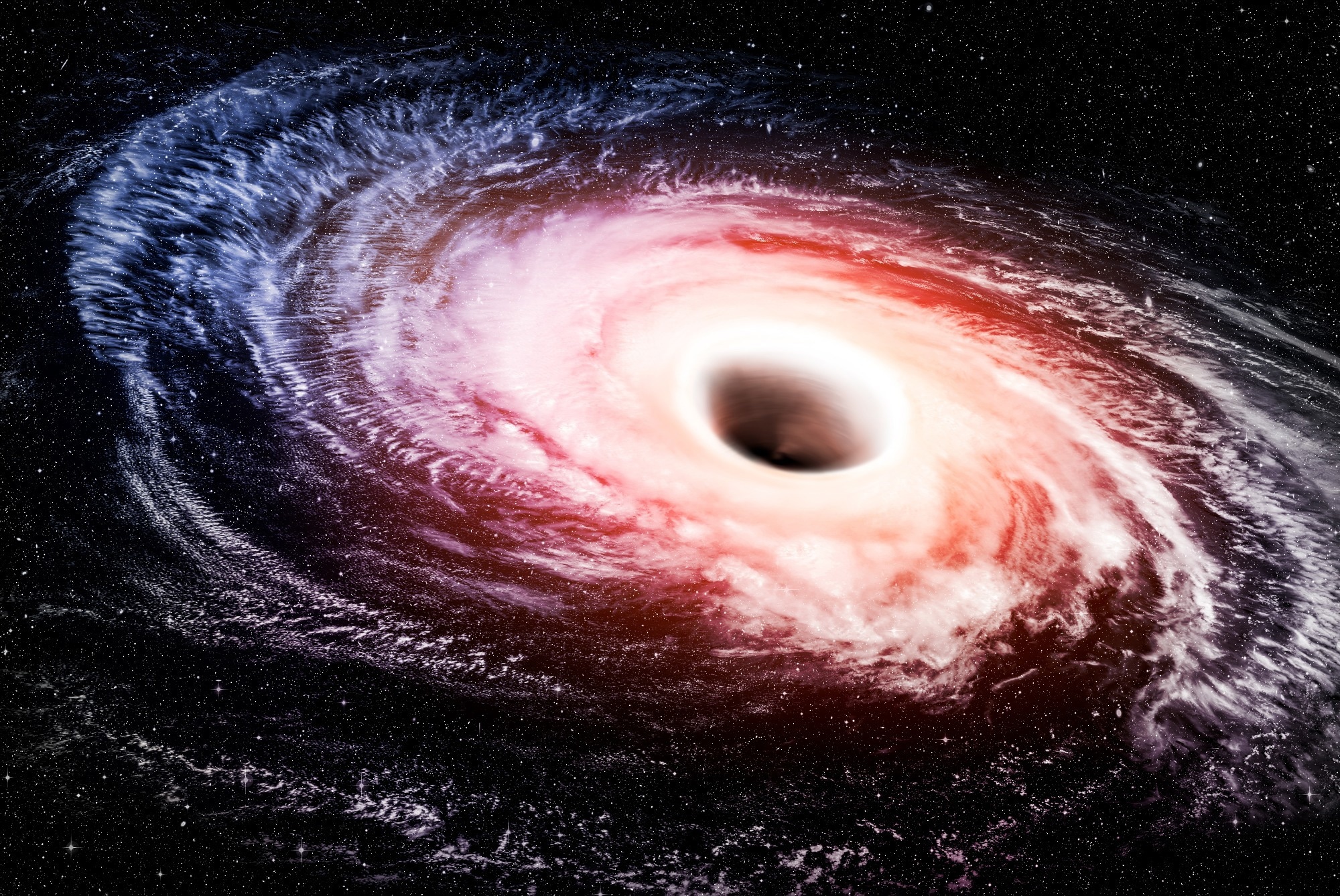Utilizing NASA’s Neil Gehrels Swift Observatory, which was launched in 2004, scientists have made a groundbreaking discovery: a black hole in a distant galaxy that is repeatedly consuming a Sun-like star. This finding marks the beginning of a new era in Swift science, made possible by an innovative method for analyzing data from the satellite's X-ray Telescope (XRT).

Image Credit: REDPIXEL.PL/Shutterstock.com
Swift’s hardware, software, and the skills of its international team have enabled it to adapt to new areas of astrophysics over its lifetime. Neil Gehrels, the mission’s namesake, oversaw and encouraged many of those transitions. Now, with this new ability, it’s doing even more cool science.
Phil Evans, Astrophysicist, University of Leicester
Evans led a study about the unlucky star and its hungry black hole, collectively called Swift J023017.0+283603 (or Swift J0230 for short), which was published in the journal Nature Astronomy on the 7th of September.
When a star ventures too close to a massive black hole, gravitational forces generate intense tides that tear the star apart, forming a stream of gas. The leading edge of this stream orbits the black hole, while the trailing edge escapes the system.
These destructive occurrences are known as tidal disruption events. Astronomers observe them as bursts of multiwavelength light produced when the debris collides with a pre-existing disk of material encircling the black hole.
Astronomers have recently been examining changes in this phenomenon, which they refer to as repeating or partial tidal disruptions.
During such events, every time an orbiting star passes too close to a black hole, the star swells outward and sheds material, but survives.
The process repeats until the star loses excessive gas and finally disappears. The characteristics of the individual star and black hole system determine the type of emission observed by scientists, resulting in a wide range of behaviors that need categorization.
Previous examples include an outburst that recurred every 114 days, possibly induced by a giant star orbiting a black hole with a mass 78 million times that of the Sun. Another recurrence happened every nine hours around a black hole with a mass 400,000 times that of the Sun, likely attributed to an orbiting stellar remnant known as a white dwarf.
On June 22nd, 2022, Swift's XRT captured Swift J0230 for the first time as it illuminated a galaxy approximately 500 million light-years away in the northern constellation Triangulum. Subsequently, Swift's XRT detected nine additional outbursts from the same location, occurring roughly every few weeks.
Evans and his research group indicate that Swift J0230 is a recurring tidal disruption of a Sun-like star orbiting a black hole with more than 200,000 times the Sun’s mass.
They estimate that the star sheds approximately three times the mass of Earth's material during each pass. This system serves as a crucial link between other suspected repeating disruptions, enabling scientists to model how interactions between various types of stars and black hole sizes influence our observations.
We searched and searched for the event brightening in the data collected by Swift’s Ultraviolet/Optical Telescope. But there wasn’t any sign of it. The galaxy’s variability was entirely in X-rays. That helped rule out some other potential causes.
Alice Breeveld, Research Fellow, Mullard Space Science Laboratory, University College London
Breeveld has worked on the instrument since before the satellite launched.
The discovery of Swift J0230 was made possible by a new automated search of XRT observations developed by Evans, known as the Swift X-Ray Transient Detector.
After the instrument observes a section of the sky, the data is transmitted to the ground, where the program compares it to previous XRT snapshots of the same area. Scientists receive an alert if any changes are detected in that portion of the X-Ray sky.
In the case of Swift J0230, Evans and his colleagues were able to promptly coordinate additional observations of the region.
Originally, Swift was developed to study gamma-ray bursts, the strongest explosions in the cosmos. But as the satellite launched, researchers identified its potential to study a host of celestial objects, similar to tidal disruptions and comets.
Swift J0230 was discovered only about two months after Phil launched his program. It bodes well for the detector’s ability to identify other transient events and for Swift’s future exploring new spaces of science.
Bradley Cenko, Mission Principal Investigator, Goddard Space Flight Center, National Aeronautics and Space Administration
Goddard controls the Swift mission in partnership with Penn State, the Los Alamos National Laboratory in New Mexico, and Northrop Grumman Space Systems in Dulles, Virginia. Other partners include Leicester, MSSL, Brera Observatory in Italy, and the Italian Space Agency.
Black Hole Snack Attack
Watch to learn how an update to NASA’s Neil Gehrels Swift Observatory allowed it to catch a supersized black hole in a distant galaxy repeatedly munching on a circling star. Video Credit: NASA’s Goddard Space Flight Center.
Journal Reference:
Evans, P. A., et al. (2023) Monthly quasi-periodic eruptions from repeated stellar disruption by a massive black hole. Nature Astronomy. doi.org/10.1038/s41550-023-02073-y.